When we think of communication, it’s usually about the actions of communicating: words, body language, tone of voice, etc.
But how do we set ourselves up for effective communication?
If you know you need to have a conversation that might be challenging, what can you do to prepare in advance?
Some of the preparation may seem obvious:
- Prepare what you want to say – this may include bullet points, key phrases, ‘supporting evidence’ when appropriate, etc.
- Practice saying it out loud.
- Anticipating possible arguments so you are prepared to discuss them.
But some preparation is less about what you need to say or how you will say it.
It’s also worth considering, how will you set your mind and nervous system up to stay calm and not let emotion ‘drive the bus?’
When anticipating a challenging conversation, especially when the outcome means a lot to you or the risk seems high, our brains tend to focus on worst-case scenarios. The more that happens, the more tense and stressed we become, until we are on the verge of our instinctive fight or flight response.
Then, when the conversation starts, we are on edge, tense, and generally feeling ‘off.’ The person we are talking to will sense that, often on a subconscious level, and that will make them nervous and on edge – basically anticipating problem or an attack. At that point, any little misunderstanding or difference of viewpoint will derail the entire conversation.
So how do you counteract that vicious cycle?
Help your body be calm and grounded in advance.
You might be wondering, “How do I do that?”
This will vary a bit depending on what your brain and body need, but there are 3 tools that can help:
- Breathing
- Movement
- Connection
Breathing (and I am talking about deep, belly breathing) sends the message to your brain that you are safe. You need to take a moment to focus fully on your breathing while you take three full, deep breaths in through your nose, and exhaling through a slightly open mouth. (If your shoulders go up and your chest moves, but your belly doesn’t go out, you haven’t quite got it down yet.)
Movement gets you connected to your body, and your blood pumping oxygen through your system, sending more oxygen to your brain so you can think more clearly. This might be a five- or ten-minute walk before a meeting, a few minutes of dancing to some of your favorite upbeat music, or even a couple of sit-ups or push-ups. Bonus, if you can walk while you are having a conversation you want to run away from, your body won’t feel like it needs to run away because it’s already moving.
Connection builds safety. If you can find a way to build rapport, remember things in common or share appreciation in advance then your mind will feel more like you are on the same team instead of in a potentially threatening situation. It will likely help the other person feel more at ease as well. And depending on the person or situation, a slight physical touch could help (clearly use with discretion and good judgement, especially in a work setting).
I noticed that if I’m having a particularly hard conversation, especially with someone I care deeply for or on a topic I am passionate about or is important to me, movement and/or touch help me. Physical touch is important to me (it’s my top Love Language), so a physical connection relaxes me. In the workplace this might not be possible, although a handshake or a brief touch on the shoulder might be possible with some people in some situations.
Positioning yourself next to someone, or at an angle, instead of across from them sends a subconscious message that you are on the same team. This can be effective in any setting, and worth considering when you need to have a hard workplace conversation. Especially important when there is a difference in status or power, like in a disciplinary meeting.
If I’m having a hard conversation with a loved one, if I sit next to them so that maybe our knees are touching as we turn toward each other to talk, or maybe hold their hand, it seems like we are on the same team. My breathing steadies and words seem to show up more easily.
I needed to have a phone call with someone about an emotional topic and started to feel antsy and irritated during the call. Once I started walking outside, my system settled, and I could stay present and calm. Thankfully I could just keep walking until we resolved the issues that had come up.
These are just a few examples to show the concepts in practice.
Remember: Breathing, Movement, Connection.
These are some ideas to get you started, but as you practice these, notice what else works for YOU.
And if you need help, I’m here for you. Reach out and set up a time to talk https://lionesscommunication.com/complimentary-consultation

